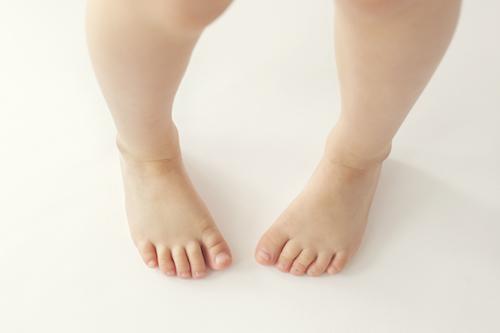Is intoeing or being pigeon toed impacting your child’s activity? Or as a parent or caregiver, is the intoeing of your child a cause for concern? Consider a Gait Plate.
Recently I had two appointments in one day which involved intoeing children (commonly referred to as Pigeon Toed). This type of referral is quite normal, and is common for us to assess and treat. 
What brought these parents to us? One had a child that tripped often and was experiencing knee pain (which for a 3-year-old to describe is odd). The other was congenital in nature, involving a physiological and structural reason.
Having children come through my door – and being a parent myself – I want to share with you some information on this topic that may be helpful.
Many parents ask if the gait of their children is normal; if the “flat footed, intoed” appearance will change; and if their child needs orthotics.
A couple simple questions lead me to my answer. First, I ask how old the child is. Followed by:
Do they have pain?
Do they experience tripping? And, if so, have they sustained injuries as a result?
Do they complain about their legs and feet?
If the answer to these questions is ”no,” then my answer is no; they do not need orthotics at this time.
If they answer “yes,” then I recommend an assessment to determine what intervention is necessary.
Interventions can vary; not all patients are given an orthotic. An assessment will help us determine where to go from there. Maybe it’s as simple as a change in footwear or footwear size, maybe it’s a referral to a physiotherapy, osteopathy, RMT, or chiropractor. The list goes on and on.
Treatment of children can be a very heated debate among professionals; however, in my professional opinion and from my experience, when a child:
1) can describe pain,
2) is not physically active due to discomfort, or
3) sustains injuries due to their mechanics,
I am an advocate for investigation and intervention.
More about intoeing
Generally, there are two different reasons for the presentation:
1) Hip/femur position is altered due to soft tissue restriction (muscle/tendon/ligament), or
2) Structural, due to anteversion of the femur, tibial torsion or congenital deformities. 

Once the cause is determined, then we can iron out a treatment plan. Growth and physical development are primary considerations when choosing treatment, with the goal ensuring milestones are met, and range of motion and functional movement are all promoted and maintained.
For the two patients I mentioned above, both exhibited functional restriction within the hip (although one presented with a congenital deformity, anatomical cause was ruled out while soft tissue restriction was at the forefront). What does that mean? It suggests that the soft tissues of the hip/pelvis are contributing to their intoeing pattern.
But the children are growing – isn’t that normal? Yes it is, but, there is a fine line when functional restrictions create:
1) pain,
2) avoidance of activity
3) tripping, with probable injury
The goals with both of these young patients included:
1) Promotion of efficient and “normal” gait patterns/mechanics.
2) Creating muscle memory that establishes uncompensated patterns and less injury.
3) Reduced discomfort.
Use of a Gait Plate
When passive hip range of motion occurs (when I move the patient’s hip while they are laying down and relaxed), but is blocked actively while they are upright walking/running (as with a soft tissue restriction and/or muscle imbalance), the utilization of a gait plate with soft tissue restriction can have profound effects. 
A gait plate can generate positive outcomes for the patient, such as:
a) less tripping
b) confidence with activity
c) motor control and patterning for walking and running
What does it look like? And, how does it work? 
A gait plate’s design includes a small extension or flange to the shell of the orthosis (applied to both feet) from the 2nd metatarsal joint to the 5th metatarsal joint. This extension reduces the ability of the foot to curve inward during walking, thus promoting and encouraging the hip to “work” by turning the leg out. This action allows the foot to bend and push off from the first MTP joint (“normal gait”).
How long is this therapy necessary?
The answer all depends on the child and their observed progress. Often children outgrow their orthoses (2 shoe size growth), and another pair is created, often with a less angled flange or extension as the strength and muscle memory improves.
Additional therapy is also recommended, such as chiropractic, physiotherapy, RMT, and/or osteopath for optimal outcomes.
Good quality footwear should also be considered with this therapy, as flexible footwear functions greater when retraining the gait patterns.

Have more questions? We’d be happy to chat!
Book your appointment now.
Email us: info@aalignment.com
Call: 519-390-0327

